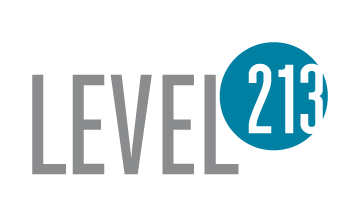Staying Ahead of the Competition: Mastering Competitive Intelligence for Your Revenue Teams
In today's rapidly evolving business landscape, the ability to understand and navigate your competition is more critical than ever. Whether it's new market entrants or your long-standing competitors making bold moves, every change has the potential to disrupt your revenue goals. To thrive, Sales and Success teams need current and actionable competitive intelligence that equips them to confidently position and defend your offerings.
For tech companies where product innovation occurs rapidly, this is especially crucial. But regardless of industry, every business must keep a close eye on the competition. That’s where a tight partnership between Product Marketing and GTM Enablement becomes invaluable, ensuring your customer-facing teams have up to date information and aren’t caught off guard.
The Shifting Competitive Landscape
Competition doesn’t remain static. With every new feature launch, product update, or market pivot, your competitive position shifts. As your company’s offerings expand and evolve, you're likely to find yourself competing with new players in the market. Effective GTM teams understand that competitive strategy involves defending your current position, while also leveraging your strengths to attack competitors where they are most vulnerable.
It’s best Enablement practice to keep your Sales and Success teams fully briefed on the top competitors and how you measure up against them. Product Marketing teams should continuously monitor the competitive landscape and collaborate with GTM Enablement to provide ongoing updates. This partnership allows your customer-facing teams to adjust their strategies quickly and effectively in response to changes in the marketplace.
Designing Effective Competitive Training: Deep Dives and Key Data
To empower your Sales and Success teams, it's essential to provide focused competitive training on a regular cadence. The most effective way to do this is through a series of deep dive sessions that rotate through your list of primary competitors. These sessions are an opportunity to thoroughly analyze each competitor, and they help your teams internalize what differentiates your offerings.
To guide your deep dive sessions, focus on these critical metrics:
Pipeline Revenue at Risk: Revenue for deals at risk where you’re going head-to-head with a specific competitor.
Unseating Opportunities: Revenue for deals where a competitor will need to be unseated.
Revenue Lost: Deals lost to a specific competitor over the past year.
Revenue Won: Deals won against a specific competitor, and the tactics that led to success.
From there, cover key areas that are crucial for your teams to understand:
Competitor Overview: High-level details on how they position themselves and what they’re known for.
Top Features: Their standout features and strengths.
Traps to Avoid: Common traps competitors set and how your team can avoid them.
Positioning: How your solution compares to theirs and where you excel.
Strategies to Win: Landmines and traps your team can set to create a competitive advantage.
Recent Wins and Losses: Concrete examples of recent battles with the competitor, analyzing what led to victory or what could be improved.
Managing Minor Competitors: High-Level Positioning
Beyond your top competitors, there will always be smaller players that pop up in your deals from time to time. It’s neither practical nor necessary to have a deep dive on every competitor you face. Instead, keep a high-level internal knowledge base with general competitive positioning that can be used to sell against these competitors.. Focus on:
Your Product Positioning: What sets you apart in the broader market.
Unique Strengths: The key reasons customers choose you over the competition.
General Market Superiority: How your offerings are positioned to handle the most common competitive scenarios.
Keep It Internal, Keep It Current
One important rule in competitive strategy is that your intelligence should be used exclusively for internal purposes. Sharing your competitive positioning with the broader public can backfire, as it allows your competitors to see exactly how you intend to challenge them. Additionally, the rapid pace of market change can quickly render any public intel outdated and make you look like you are out of touch with the market. Keep your findings secure within your GTM teams to maintain your edge and your credibility.
Final Thoughts: Equip Your Team for Competitive Success
Effective competitive intel is a game-changer. It empowers your revenue teams to stay ahead of the game, engage prospects with confidence, handle objections with ease, and highlight the strengths that set you apart. Investing in consistent, high-quality competitive training gives your team the tools they need to win.
Ready to enhance your competitive strategy? Dive deeper by checking out our book, Accelerating Revenue - Your Definitive Guide to the Theory and Practice of Go-to-Market Enablement. Or, if you're looking for customized guidance, reach out to engage our services—we're here to help your team thrive in an ever-changing competitive landscape.
Co-authored by Amanda Leikam and Roz Greenfield, Founders of Level213


